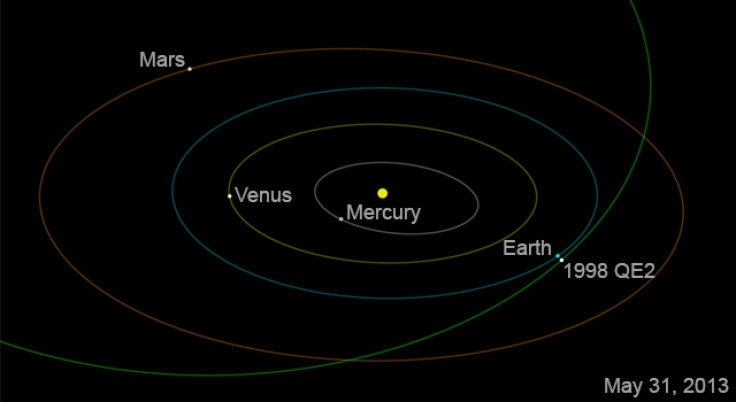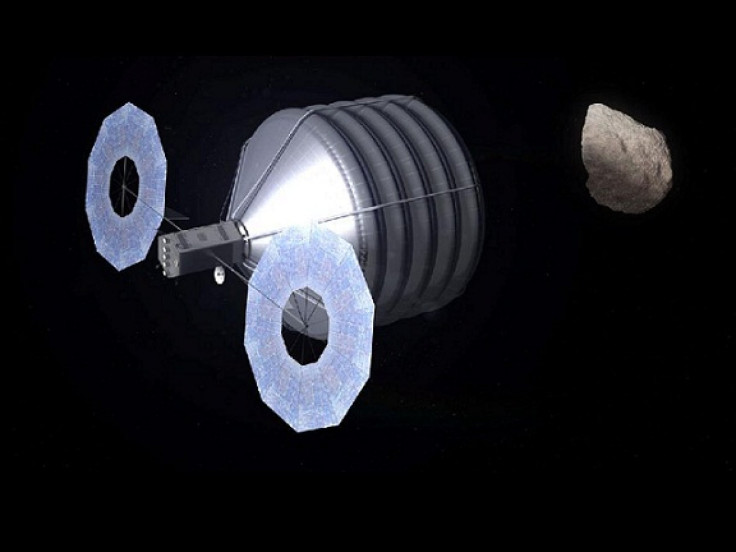1.7 Mile-Wide Asteroid Swings By Earth Friday; Chat About It With Bill Nye

A big asteroid is swinging by Earth late Friday afternoon – but don’t worry too much, as it’s slated to miss us by about 3.6 million miles.
The object, called 1998 QE2, is about 1.7 miles across, which is as long as San Francisco’s Golden Gate Bridge, or nine times the length of the Queen Elizabeth 2 cruise ship. It will come its closest to Earth at 4:59 p.m. on Friday.
“Asteroid 1998 QE2 will be an outstanding radar imaging target… and we expect to obtain a series of high-resolution images that could reveal a wealth of surface features," NASA radar astronomer Lance Benner said in a statement.
1998 QE2 was discovered in August 1998 by the Massachusetts Institute of Technology’s Lincoln Near Earth Asteroid Research program. This pass will be the closest the asteroid gets for at least another 200 years, and scientists are gearing up to take high-resolution images as it flies by.
"Whenever an asteroid approaches this closely, it provides an important scientific opportunity to study it in detail to understand its size, shape, rotation, surface features, and what they can tell us about its origin. We will also use new radar measurements of the asteroid's distance and velocity to improve our calculation of its orbit and compute its motion farther into the future than we could otherwise."
In honor of the not-exactly close encounter, the White House is hosting an online chat on Friday afternoon at 2 p.m. Eastern. Speakers at the “We The Geeks” event will include former astronaut Ed Lu and former television show host Bill Nye (the Science Guy). Tune in at the White House’s Google+ page to watch the guests discuss how scientists identify asteroids and how they’re working on ways to capture and use space rocks in the future.
NASA is intensely interested in the prospect of capturing asteroids for study. The space agency’s proposed budget for the 2014 fiscal year includes a plan to robotically grab a small near-Earth asteroid and redirect it to a stable orbit near our planet, thus enabling astronauts to visit and examine it.
Here’s an artist’s rendition of one such space rock-capturing device:

Near-earth asteroids have been capturing attention of late. In January, the asteroid Apophis came within 9 million miles of Earth. When Apophis was discovered in 2004, scientists calculated there was a slim (2.7 percent) chance that it would strike Earth. Further calculations ruled this out, but left the possibility open for another collision in 2036.
But the most recent observations of Apophis, which is as wide across as about three-and-a-half football fields, show that the probability of an impact in 2036 is less than one in a million – close to impossible.
NASA’s Near-Earth Object division is our eye on potential threats in the sky, keeping tabs on the asteroids and comets that veer near our planet. In 2016, the space agency is sending a robot to investigate the asteroid Bennu, which will have several very slight chances of impacting Earth between 2169 and 2199. Bennu is estimated to be about 1,600 feet across – wider than the height of the Sears Tower. The robot is intended to return with a sample of the space rock in 2023. Closer observations of Bennu’s features and shape will help scientists further define its risk to Earth.
© Copyright IBTimes 2024. All rights reserved.











